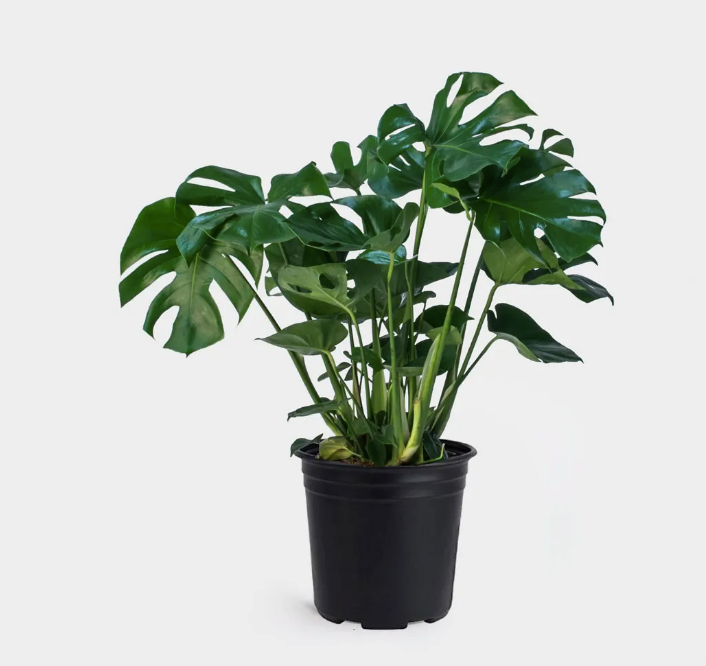
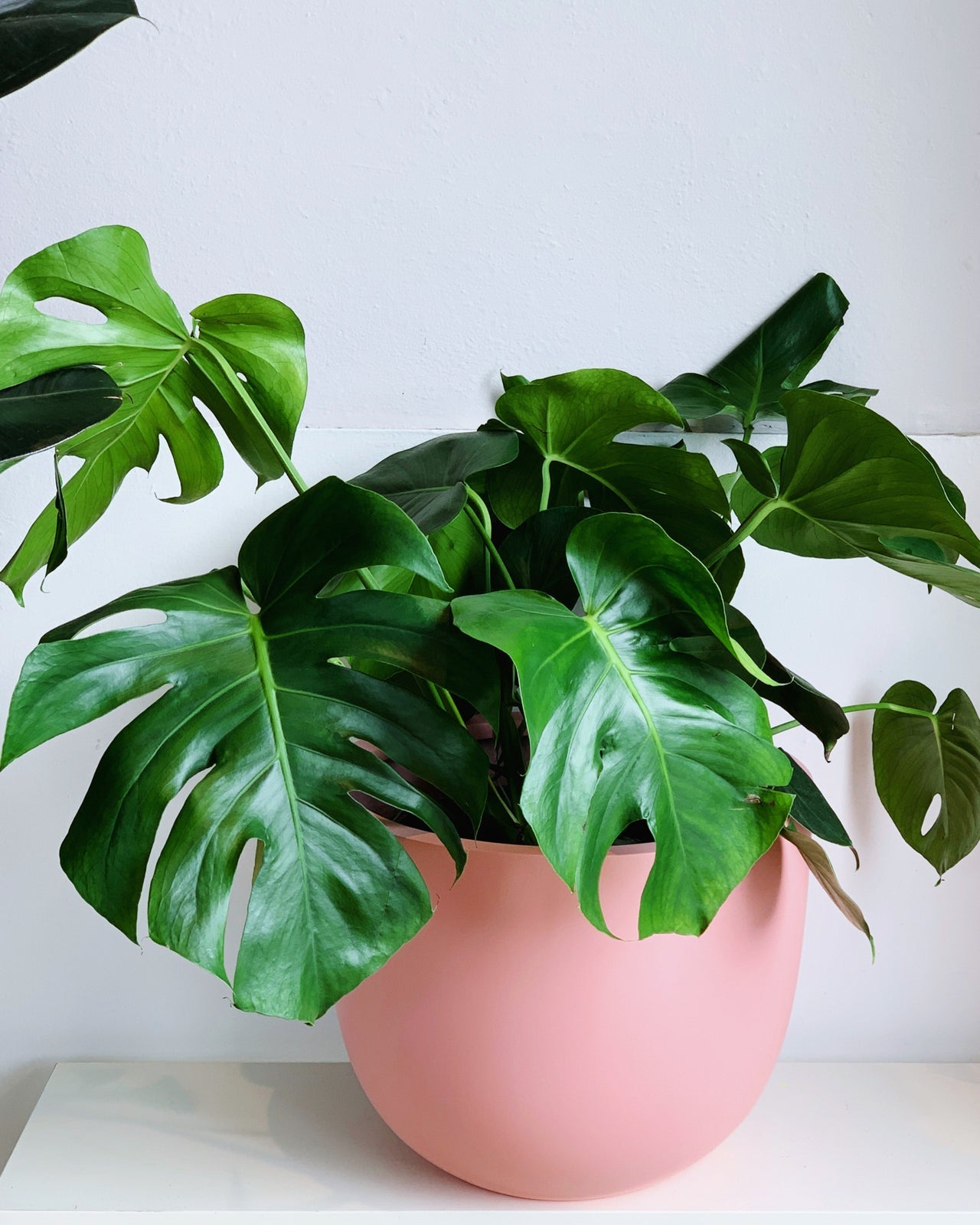
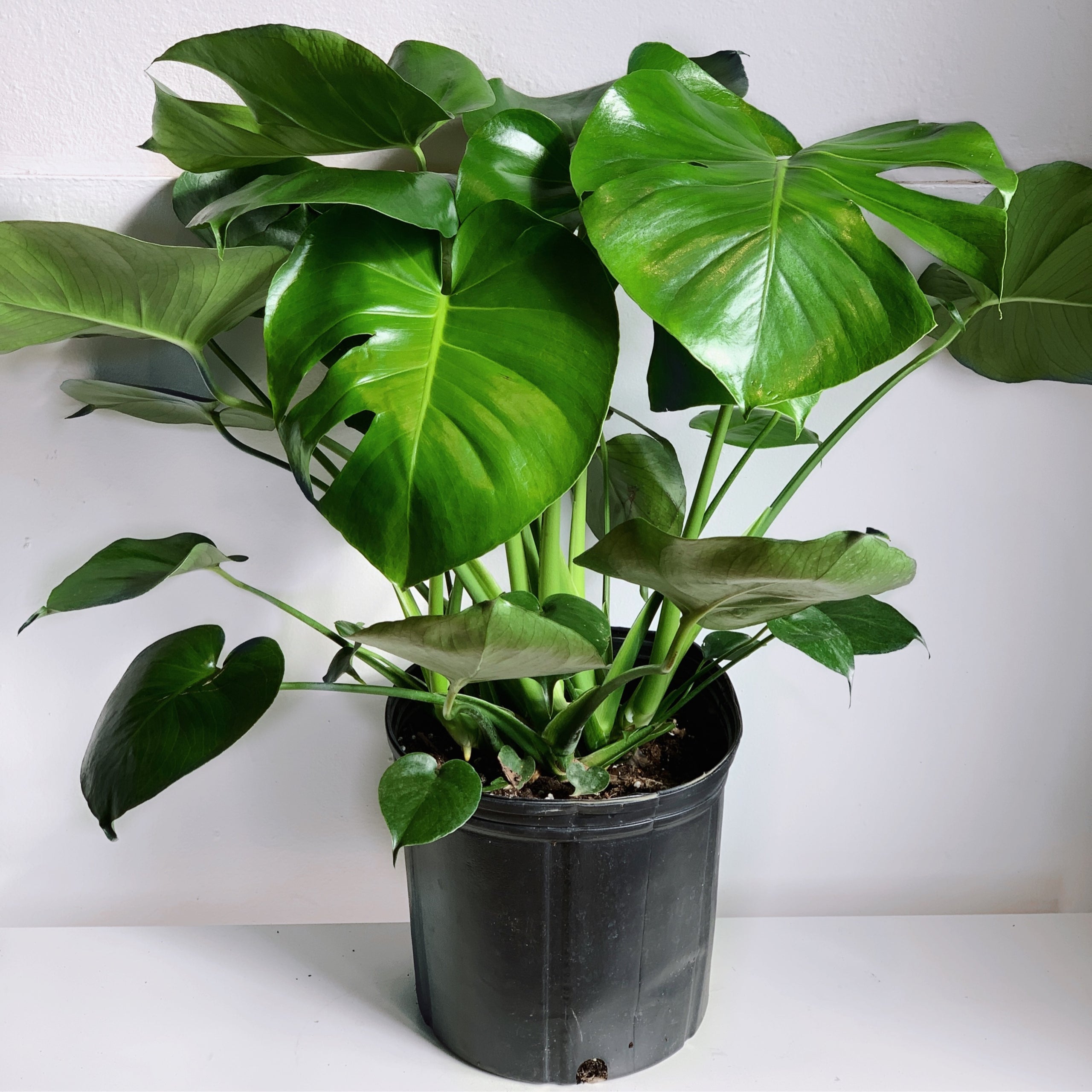
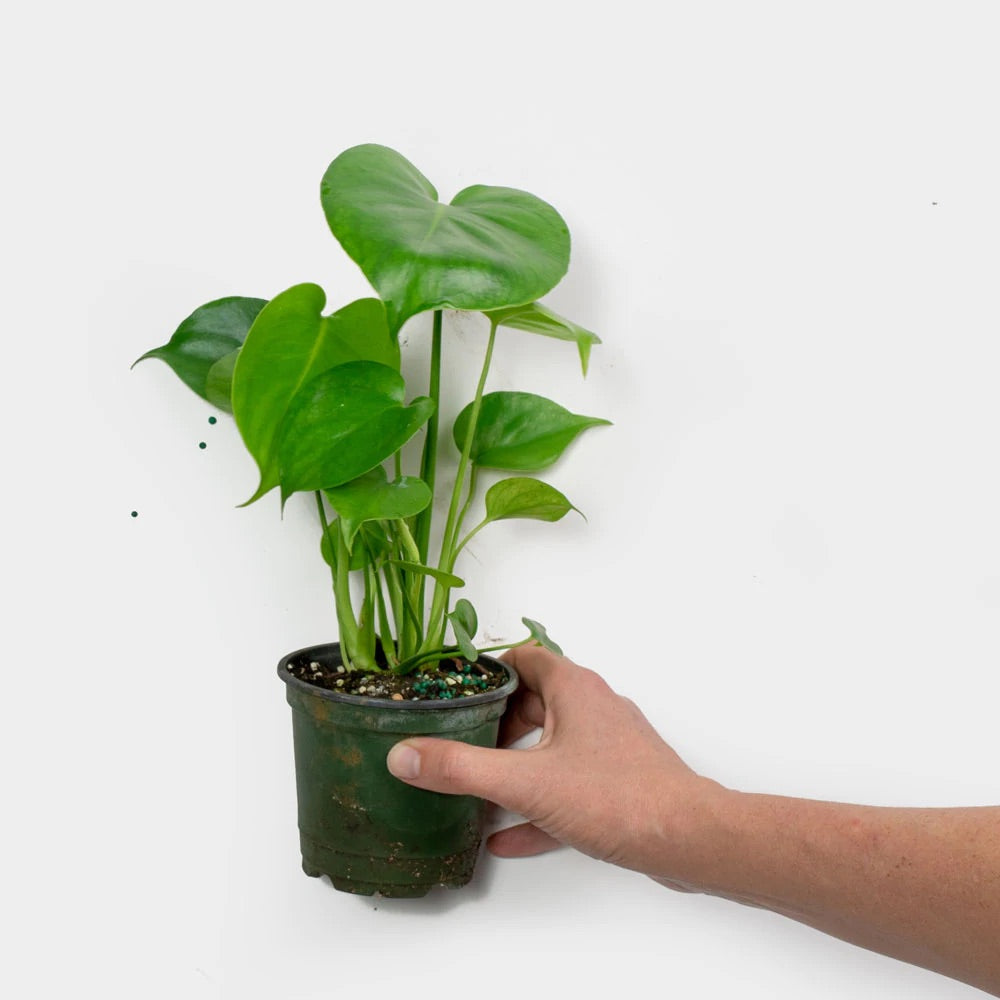
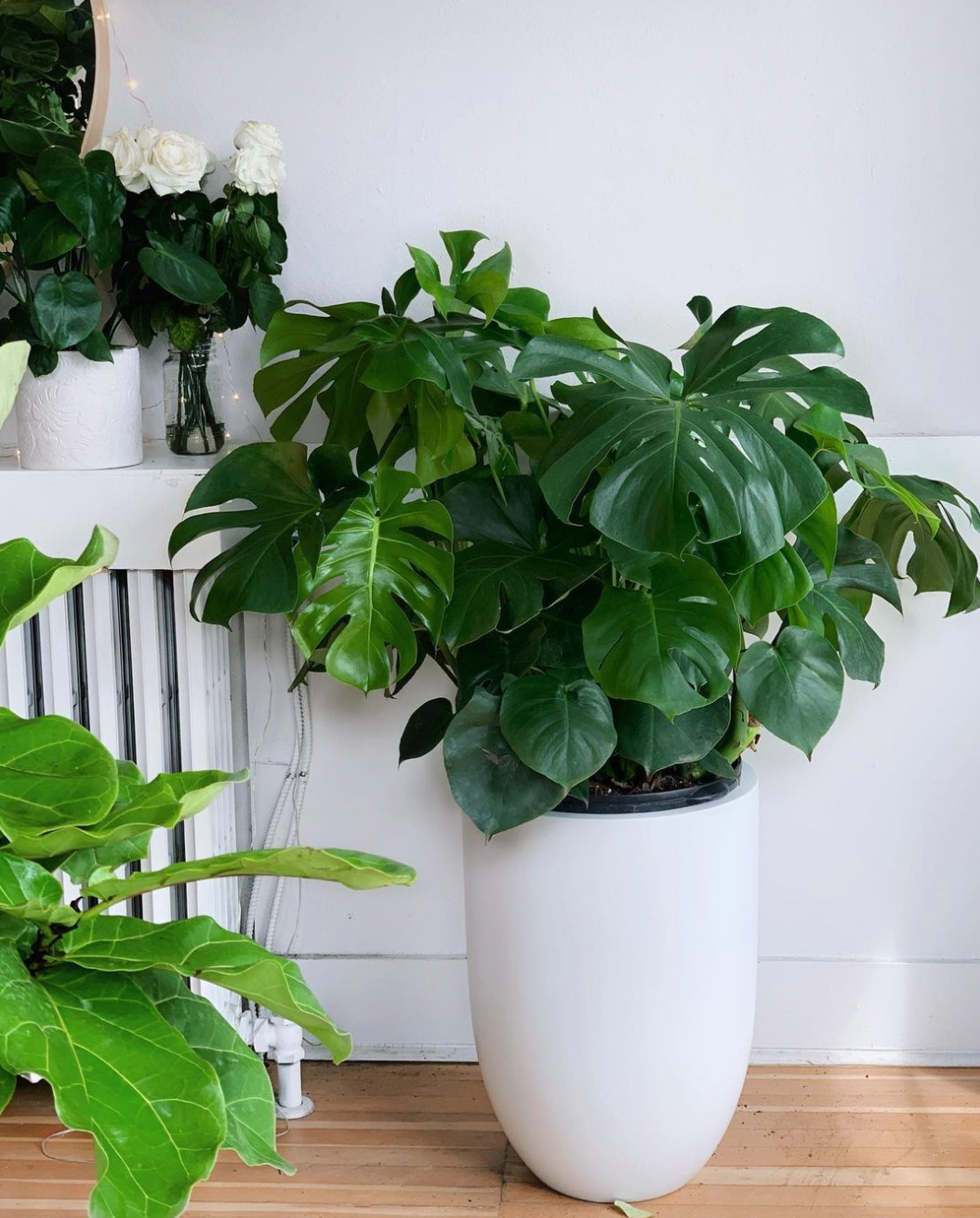
Monstera Deliciosa
Monstera Houseplant Care Guide
Monstera (Monstera deliciosa) is a popular houseplant known for its large, glossy, and fenestrated leaves. This tropical plant can grow impressively indoors with the right care. Here’s a comprehensive care guide to keep your monstera thriving:
1. Light Requirements
- Ideal: Monstera prefers bright, indirect light. Too much direct sunlight can scorch its leaves.
- Too little light: In low light, the plant will grow more slowly, and its signature holes in the leaves (fenestrations) may not form.
- Tip: Rotate the plant occasionally to ensure all sides receive even lighting and encourage balanced growth.
2. Watering
- Frequency: Water when the top 2-3 inches of soil feel dry to the touch. Typically, this means watering about once a week, but it depends on your home's environment.
- Drainage: Ensure the pot has proper drainage to prevent root rot. Allow water to drain completely after watering.
- Overwatering: Avoid soggy soil, as Monstera roots are sensitive to overwatering.
3. Humidity
- Ideal levels: Being a tropical plant, Monstera thrives in higher humidity (60-80%). If the air is too dry, you might see browning leaf edges.
- Boosting humidity: Use a humidifier, group plants together, or place the pot on a tray with water and pebbles to increase humidity around the plant.
4. Temperature
- Ideal range: 18°C to 29°C is perfect for monstera. Avoid temperatures below 10°C as this can harm the plant.
- Protection from drafts: Keep away from cold drafts, heating vents, or areas with sudden temperature changes.
5. Soil
- Best mix: Monstera prefers well-draining, aerated soil. A mix of peat-based potting soil combined with perlite or orchid bark works well to improve aeration.
6. Fertilizing
- Frequency: Fertilize every 4 weeks with Ash & Fig Living Fertilizer
7. Pruning and Maintenance
- Leaf care: Wipe the leaves with a damp cloth to remove dust and improve photosynthesis.
- Pruning: You can prune leggy growth or remove yellowing or damaged leaves as needed. Pruning also encourages fuller growth.
- Support: As the plant grows, it may need a moss pole or stake to support its climbing habit.
8. Repotting
- When to repot: Repot every 1-2 years, or when roots start circling the pot or growing out of the drainage holes.
9. Propagation
- Method: Monstera can be propagated easily through stem cuttings. Choose a cutting with at least one node and an aerial root.
- Steps: Place the cutting in water or directly into soil. If in water, wait for roots to grow before planting.
10. Common Issues
- Yellow leaves: This may indicate overwatering, lack of light, or nutrient deficiencies.
- Brown leaf edges: Usually a sign of low humidity or underwatering.
- Pests: Keep an eye out for common pests like spider mites, mealybugs, or scale. Treat infestations with insecticidal soap.
11. Toxicity
- Caution: Monstera plants are toxic if ingested by pets.
By providing the right environment and attention, your monstera will reward you with its beautiful, signature leaves and vibrant growth!
Choose options





Monstera Deliciosa
Sale priceFrom $15.00

